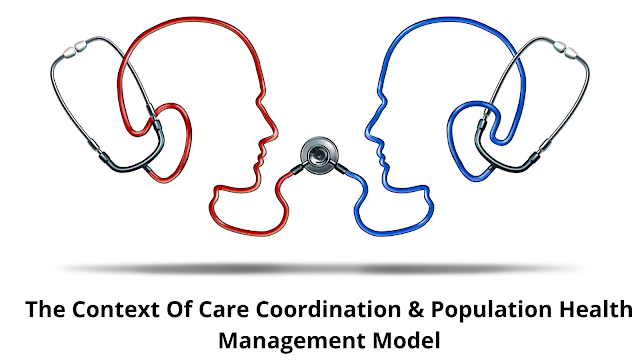The Context Of Care Coordination & Population Health Management Model
Population Health Management (PHM) aims to improve the healthcare quality of a group of individuals by monitoring and identifying specific patients within that group. The Population Health Management Platform provides real-time insights and coordinated interventions to care providers by identifying and addressing care gaps in the patient population.
The well-designed Population Health Management Solutions
improves healthcare outcomes and cost reductions by providing solutions to
identify and manage the quality of care. The PHM Solutions facilitate care
coordination by supporting interoperability across care services to connect
chronically ill patients and their families with preventive care, effective
services, and resources.
Care Coordination Process
Care Coordination is a core component of the PHM platform
that helps in the management of chronic conditions. It enables organizations to
manage Pop Health effectively by developing connections between laboratory
data, electronic health records, patient registries, and prescription data.
Care Coordination is an information-rich process that optimizes patient-centered sustainable care through big data, decision-making, assessment, planning, interventions, and evaluation. These procedures are carried out at the population and individual levels.
Big Data & Decision-Making
The data analysis determines the population’s specific requirements and problems particularly those at risk of fatality and complications. The data analysis also identifies the variables involved in problem-solving and decision-making for quality care.
Assessment
Assessment is an essential feature of Care Coordination as it ensures that crucial information is available for the planning and intervention stages. A thorough assessment identifies the high-risk individuals’ specific problems and needs that must be addressed and prioritized.
Planning
After gathering information about identified problems and
needs of the target group, the planning phase helps address the issues. The
first phase is to develop a plan to improve the health of the target group.
There is a possibility that the target group may require more than one plan,
depending on the intricacy of the problem or need.
The interventions should address the target group's needs adequately.
The interventions fall into three distinct and interconnected categories:
• Preventive
Measures:
The preventive measures focus on preventative care, early
detection of disease, and injury prevention.
• Care
Transitions:
Care Coordination during care transitions can identify the
underlying factors of problems such as communication gaps related to sharing of
clinical records and timely follow-ups with the caregiver.
• Care for
Chronic Diseases
Clinical decision support systems are a critical element for providers who care for chronically sick patients.
Evaluation
The final stage of care coordination is an evaluation to improve care outcomes. Re-evaluate the care plan regularly and identify the new needs. Keep the healthcare report up-to-date by re-evaluating the data and insights from different sources.
Care Coordination for Payers
Healthcare Payers have an influence on care coordination;
hence it is critical to have a system that allows easy transactions, data
audits, reimbursements, approvals, and referrals connected to the healthcare
system.


.png)
Comments
Post a Comment
Please do not enter any spam link in the comment box